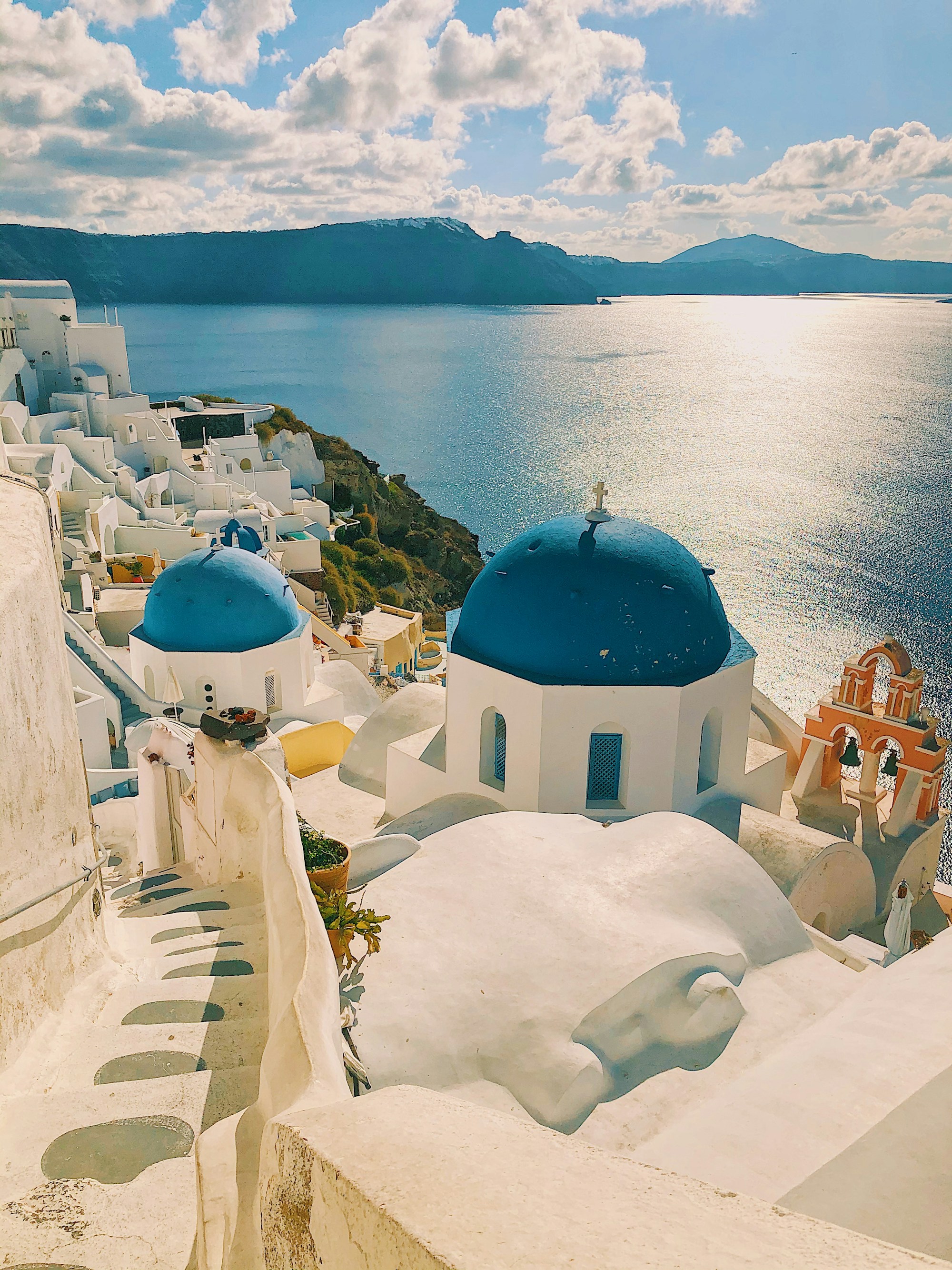Complete Travel Guide to Santorini: Culture, Cuisine & Sites
Explore Santorini's rich culture, unique cuisine, and stunning sites with our complete travel guide. Your Greek island adventure starts here.

Introduction
Known for its beautiful sunsets, churches with blue domes, and white buildings clinging to cliff sides, Santorini is a stunning island located in the southern Aegean Sea. It's not only a visually appealing place, but also rich in history, culture and culinary delights, making it a must-visit destination for tourists.
History
Santorini, also referred to as Thira, came into existence as a result of intense volcanic activity. The Minoan eruption, one of the largest volcanic events on Earth in recorded history, occurred here around 1600 BCE. This event and its aftermath have significantly shaped the history of Santorini.
Historical sites like Akrotiri, an ancient city buried under volcanic ash around 3600 years ago, and Ancient Thera, which boasts ruins of Hellenistic, Roman, and Byzantine eras, offer fascinating insights into the past of the island.
Culture & Customs
Santorini's culture is a perfect blend of traditional Greek heritage and the unique prehistoric, medieval, and Cycladic influences. The locals take immense pride in their customs and traditions. Easter is a grand celebration, solemn during the holy week, and transforming into a big feast on Easter Sunday. During summer, various festivals dedicated to patron saints are celebrated with feasts, music, and dance.
Cuisine
Renowned for its distinctive culinary culture, Santorini serves up delicious local food. Tomatoes, eggplants, and the local white eggplants are delicacies not to be missed. Fava, a dish made from yellow split peas, and local goat cheese are some other prime attractions. The restaurants, called tavernas, provide a wide range of seafood. When it comes to wines, try the island’s signature Assyrtiko wine, which is subtle, yet beautifully complex.
Noteworthy Sites
The blue dome churches of Oia and the sunsets at Amoudi Bay are iconic pictures that represent Santorini globally. The ancient cities of Akrotiri and Thera are a must for history buffs. To soak up the sun, visit the unique Red Beach, Black Beach, and the White Beach.
Local Anecdotes
Legend has it that Santorini might have been the lost city of Atlantis mentioned by Plato. The cataclysmic eruption, the advanced civilization of Akrotiri, and the resulting tsunami might have led to the theories linking Santorini to Atlantis.
Interesting Facts
- The name Santorini was given by the Latin Empire in the thirteenth century and is a reference to Saint Irene.
- Despite its volcanic nature, Santorini boasts a rare breed of grape that's resistant to volcanic ash.
- Santorini's old port was destroyed by a rock fall in 1956.
Google map coordinates
To explore virtually or get an idea of the island's geography, use the coordinates 36.3932° N, 25.4615° E in Google Maps.
Please note: The iframe embedding code for the Google Map cannot be included as part of this guide due to potential privacy and security issues. We highly recommend finding Santorini using the given directions and enjoy the stunning virtual tour that Google Maps can offer.
